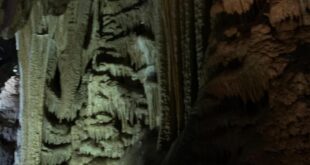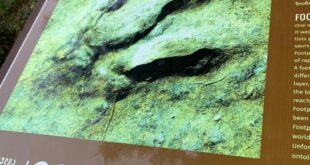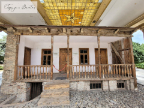Jvari Monastery: A Glimpse into Georgia’s Past

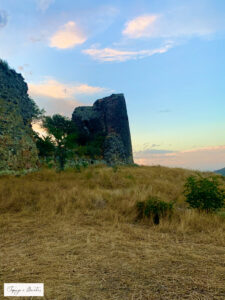
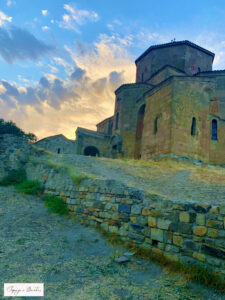
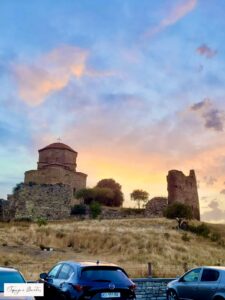
Location: A Majestic Perch Over Mtskheta
Jvari Monastery sits high on a hill, offering a stunning view of the ancient Georgian town of Mtskheta. From this elevated perch, the monastery looks out over the meeting point of the Aragvi and Mtkvari rivers.



The sweeping panorama from this spot is a breathtaking view of rolling hills and shimmering waters, creating a perfect setting.
How to Reach: A Scenic Voyage
Getting to Jvari Monastery is a delightful journey through Georgia’s picturesque countryside. It’s about a 20-minute drive from Tbilisi, the vibrant capital. For those using public transport, marshrutkas (shared minibuses) depart regularly from Didube Station in Tbilisi to Mtskheta. From there, a short taxi ride or a leisurely walk will bring you to the monastery’s doorstep.
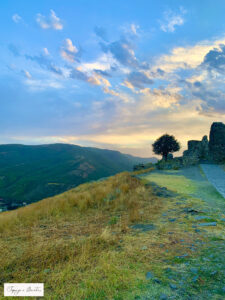
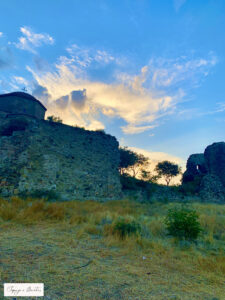
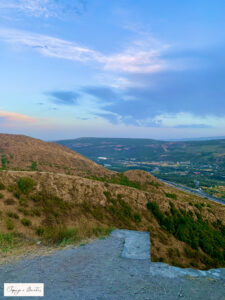
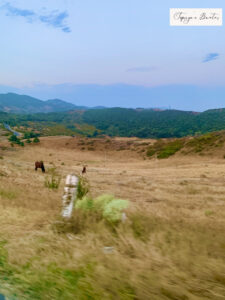

Surrounding Area: A Picture of Tranquility
The approach to Jvari is as enchanting as the destination itself. The road winds through lush fields and gentle hills sprinkled with quaint Georgian homes and farms. The nearby town of Mtskheta, rich with historical gems like the Svetitskhoveli Cathedral and Samtavro Monastery, adds to the charm. The surrounding landscape feels like a serene painting, inviting visitors to slow down and relish the beauty of the Georgian countryside.

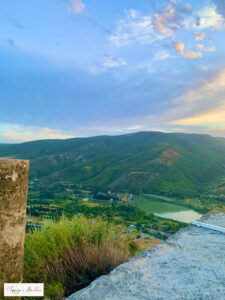

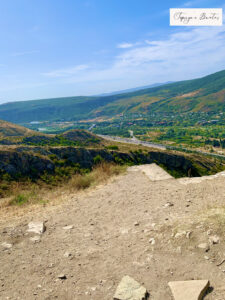
Why Visit Jvari Monastery: A Doorway to History
Jvari Monastery is more than just a beautiful site; it’s a window into Georgia’s rich religious history.
Established in the 6th century by King Mirian III, the monastery symbolizes a dramatic shift from ancient pagan beliefs to Christianity. The monastery’s simple yet striking design features a classic cross-shaped plan and robust stone walls. Its architecture signifies the early Christian transition, merging sacred symbolism with practical design.
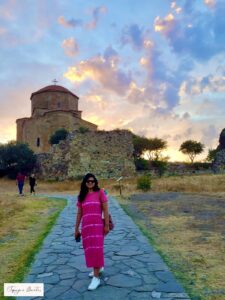

The hill on which Jvari Monastery stands was originally a sacred site for pagan worship. Towering idols once overlooked Mtskheta, embodying the region’s pre-Christian Faith. This ancient worship place was transformed by the arrival of Christianity. King Mirian III, in collaboration with Saint Nino, who was instrumental in Georgia’s Christianization, ordered the destruction of these pagan idols and erected a Christian cross in their place. This act marked a significant turning point, symbolizing the spiritual transition from paganism to Christianity.
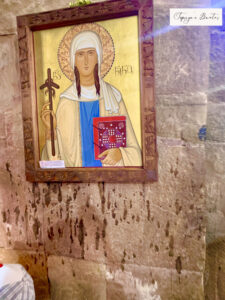
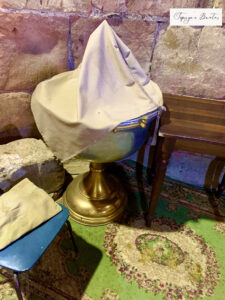
Legends and Lore
In the 4th century, Mother Mary appeared to Saint Nino, a Cappadocian female missionary, and instructed her to spread Orthodox Christianity among the pagan-worshiping population of Georgia. St. Nino succeeded in converting the Georgian queen Nana, but King Mirian III stubbornly clung to his pagan beliefs. According to legend, the King was blinded during a hunting trip when darkness suddenly fell upon the land. The light, and his sight, were restored only after he prayed to “Nino’s God.” King Mirian converted soon thereafter and ordered Christianity to be the state religion.

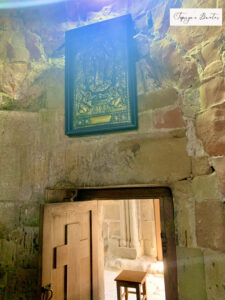
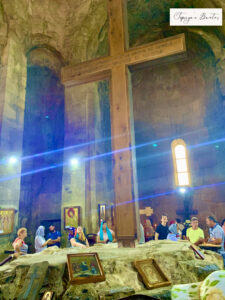
With the support of the King, St. Nino erected a large wooden cross on the top of a hill where a pagan temple had stood. Pilgrims from all over the Caucasus made the journey to Mtskheta to pray before the cross, which was said to perform miracles. A small church was erected over the remnants of the wooden cross in 545, but the popularity of the pilgrimage site soon demanded a larger structure. The second church, constructed upon the hill between 590 and 605, is the present-day Jvari Monastery.
Best Time for Stunning Views: Dawn and Dusk
To fully appreciate the monastery’s breathtaking vistas, visit during the magical hours of sunrise or sunset.
In the morning, soft light illuminates the monastery and the rolling hills, creating a warm, golden glow.



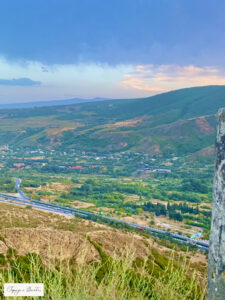
At sunset, the sky’s hues blend into a canvas of deep oranges and purples, casting a dramatic and peaceful light over the landscape. The changing colours create a dramatic and picturesque backdrop, adding to the monastery’s enchanting atmosphere.



These moments are perfect for capturing the monastery’s beauty and soaking in the serene atmosphere.
Historical Significance: A Pivotal Point in Faith
Jvari Monastery holds deep historical significance. Constructed in the 6th century, it marks the spot where Saint Nino is said to have erected a cross, signifying the spread of Christianity throughout Georgia. The monastery’s enduring presence symbolizes the strength of Georgian spirituality and offers a glimpse into the country’s rich religious heritage.

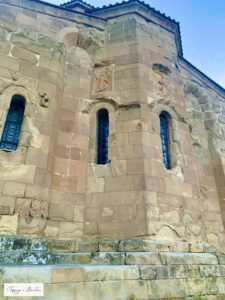

Tips to enhance your visit


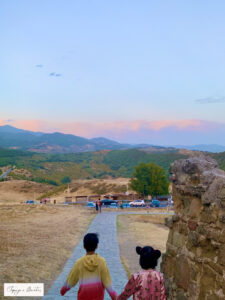
- Comfortable Shoes: The path to the monastery can be uneven, so wear sturdy, comfortable footwear.
- Dress Modestly: As a sacred site, modest clothing is recommended. Keep shoulders and knees covered.
- Timing: Visit early in the morning or late in the afternoon to avoid crowds and enjoy a more peaceful experience.
- Weather Check: Clear weather offers the best views. Check the forecast to ensure a memorable visit.
Making the Most of Your Trip:

- Guided Tours: A guided tour can provide valuable context and stories about the monastery’s history and significance.
- Local Delights: After your visit, explore Mtskheta’s local cuisine. The town offers delicious Georgian dishes that add a culinary touch to your journey.
- Respect the Sacred Space: To honour the monastery’s spiritual importance, maintain a respectful attitude and follow any visitor guidelines.
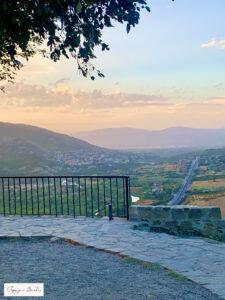

Jvari Monastery is more than a historical landmark; it is a profound symbol of spiritual transformation, bridging ancient pagan traditions and early Christian Faith. Its scenic views, rich history, and architectural elegance make it a must-see destination for anyone exploring Georgia.
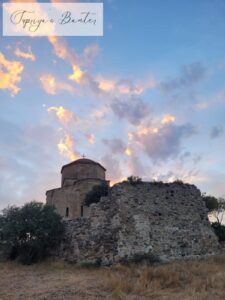
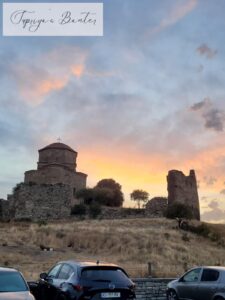
Continue Reading:
Georgia: A Wine Lover’s Dream Wrapped in Legends and History
Mtskheta, Georgia: The Sacred Side of Georgia
Uplistsikhe: The Enigmatic Cave City of Georgia
Stalin Museum: A Journey into Georgia’s Complex Past
The Majestic Okatse Canyon: Georgia’s Natural Marvel
Crossing the Crystal Chasm: Georgia’s Diamond Glass Bridge
 Supriya's Banter
Supriya's Banter

